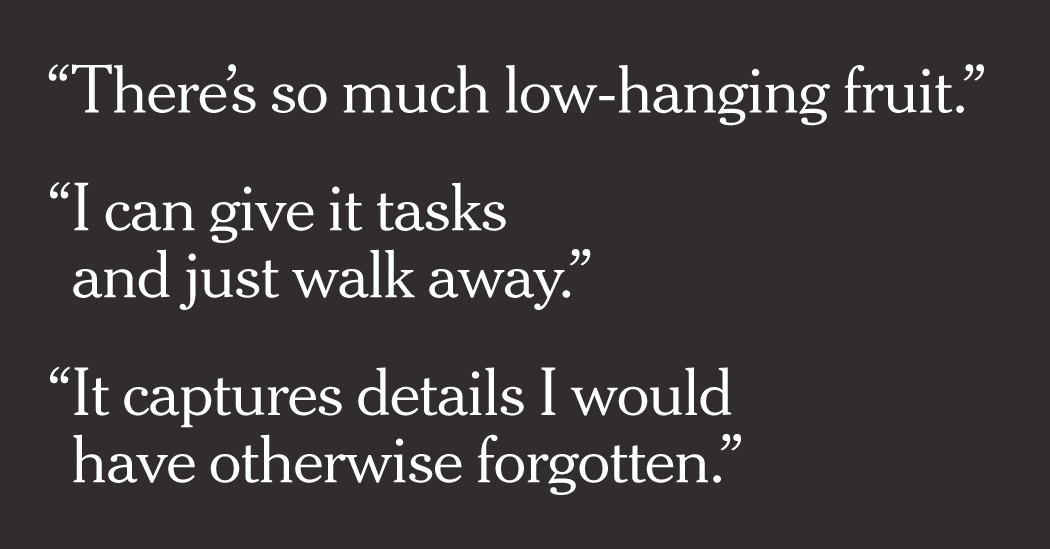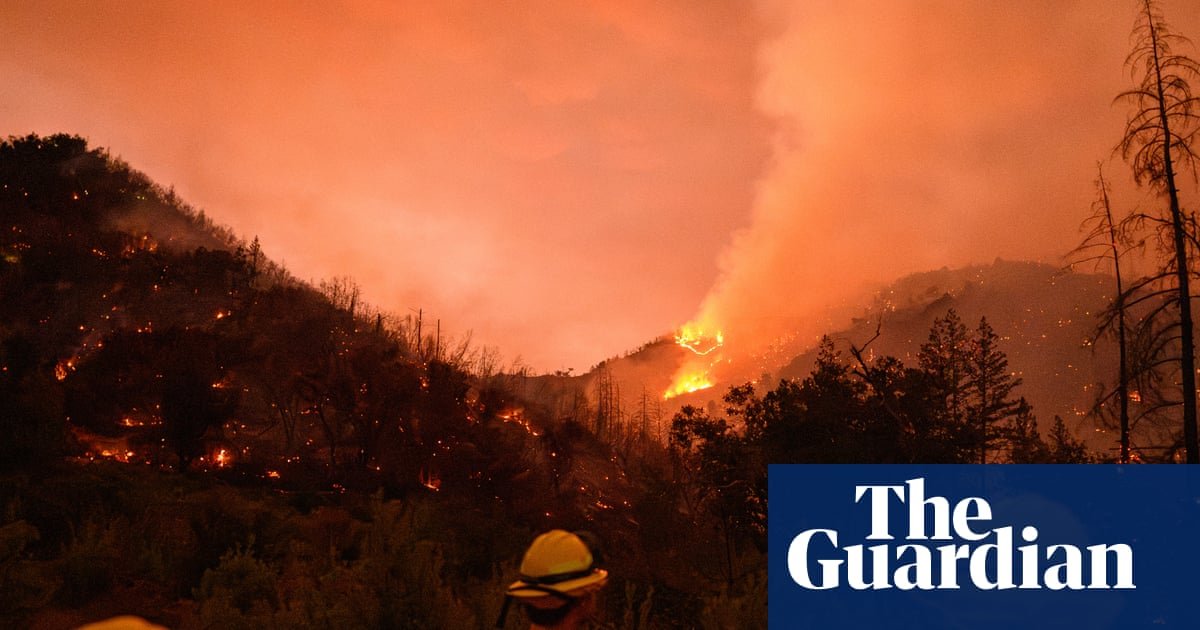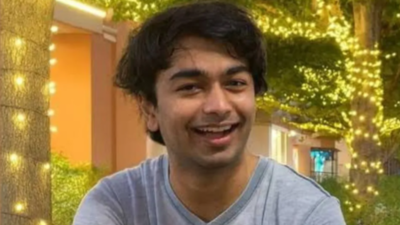Business
21 Ways People Are Using A.I. at Work

“I can give it tasks and just walk away.”
“It captures details I would have otherwise forgotten.”
“There’s so much low-hanging fruit.”
“The important thing is to maintain a reserve of skepticism.”
A burst of experimentation followed ChatGPT’s release to the public in late 2022. Now many people are integrating the newest models and custom systems into what they do all day: their work.
Chefs are using A.I. to invent recipes; doctors are using it to read M.R.I. and CT scans; scientists are unlocking discoveries. It’s helping workers with their day-to-day tasks: writing code, summarizing emails, creating ideas, generating curricula — even as it still makes plenty of mistakes.
Recent surveys have found that almost one in five U.S. workers say they use it at least semi-regularly for work. Twenty-one people told us how.
People are using A.I. to …
Select wines for restaurant menus
Sam McNulty
Restaurant owner and operator
Mr. McNulty, who owns restaurants, brewpubs and dance clubs in Cleveland, uses ChatGPT to analyze sales reports and brainstorm how to grow sales. He’s also used it to help pick wines. He sent a “voluminous” wine portfolio from a distributor to the chatbot and gave it some instructions — specific pricing and particular regions among them — and got back a list, including:
Herdade do Esporão Monte Velho Branco
Region: Vinho Regional Alentejano, Portugal
Grapes: Antão Vaz, Roupeiro & Perrum
Wholesale Est.: $7-9 per 750 ml
Why It’s Great: A crowd‐pleasing white that combines citrus, stone fruit and saline notes with bright acidity — an ideal food‐friendly pour for small plates or seafood.
“The results were astonishingly good and saved me and my team countless hours of meetings with wine reps, tastings and debate,” he said. “The only part of the wine-program building process I missed was the tastings … so far the A.I. can’t recreate the joy of taking that sip.”
Digitize a herbarium
Jordan Teisher
Curator and director
There are eight million dried plant specimens at the Missouri Botanical Garden herbarium in St. Louis. Now A.I. is helping identify them.
Experienced taxonomists can quickly recognize most specimens, said Mr. Teisher, but that requires years of training.
So the garden is building an A.I. model using spectral data — the pattern of light reflected by the plant. Leaves from many different kinds of plants are scanned, labeled and put into the model as training data. Then new plants can go through the same process, and the model will identify them. If the model is quite certain that the spectral data look the same as they do for other plants, it’ll say so. If not, the plant can go to an expert.
“We can cut down on the time expert taxonomists are spending on common species,” Mr. Teisher said. “Rather than them getting five boxes of plants that come in, they can get a small box that says, ‘Here are the ones the model isn’t sure about.’”
Those could be species so rare or infrequently seen in the herbarium that the model simply couldn’t match it, or a new species entirely.
And this kind of project is only possible, the garden staff said, because of advances in cheap computing power. The GPUs necessary to train A.I. models quickly are easier to get than before. And the garden has enough funding to process several hundred thousand specimens. Identified specimens can be used for a variety of research, including on biodiversity and climate change.
“We want these data to be compatible with other institutions, so we’re collaborating closely,” Mr. Teisher said. “We have the money to do a big chunk of our herbarium, but ultimately we want this to be a tool usable by everyone.”
Make everything look better
Dan Frazier
Designer and small business owner
Mr. Frazier designs and sells things like bumper stickers and magnetic signs. To help with the graphic design, he uses Adobe Photoshop’s Generative Fill, a two-year-old A.I. feature that adjusts images automatically.
“If I take a picture of a product, and don’t like the glare or reflection I see on some shiny surface, I can use generative fill to ‘imagine’ that part of the photo, and usually one of the resulting images will be acceptable to me,” he said. “Or if I want to use a head shot of a politician on a bumper sticker, and I want to show a little more of the coat or shirt than appeared in the photo I am using, I can use generative fill to imagine that additional clothing.”
A problem that might have taken 20 minutes to address now takes 20 seconds, he estimated.
In one recent case, he wanted to post an image of a bike helmet he’d built himself, but he didn’t think he was the best model for it. So he used Photoshop’s A.I. to generate a woman’s face.
But A.I. can only fill in the gaps for Mr. Frazier. “I have found generative fill to be less useful at creating images from scratch,” he said. “I once wanted to create an image of Joe Biden looking like one of the founding fathers, maybe like George Washington. But I was not happy with any of the results I was getting. I ended up melding a photo of Biden with a lifelike painting of Washington using traditional Photoshop techniques.”
Create lesson plans that meet educational standards
Manuel Soto
E.S.L. teacher
Mr. Soto, an E.S.L. teacher in Puerto Rico, said the administrative part of his job can be time consuming: writing lesson plans, following curriculum sent forth by the Puerto Rico Department of Education, making sure it all aligns with standards and expectations. Prompts like this to ChatGPT help cut his prep time in half:
Create a 5 day lesson plan based on unit 9.1 based off Puerto Rico Core standards. Include lesson objectives, standards and expectations for each day. I need an opening, development with differentiated instruction, closing and exit ticket.
After integrating the A.I. results, his detailed lesson plans for the week looked like this:
But he’s noticing more students using A.I. and not relying “on their inner voice.”
Instead of fighting it, he’s planning to incorporate A.I. into his curriculum next year. “So they realize it can be used practically with fundamental reading and writing skills they should possess,” he said.
Make a bibliography
Karen de Bruin
Professor of French and scholar of 18th-century French literature
Anyone who has ever assembled a “works cited” section knows the dizzying array of styles, formats and specific punctuation rules required for a bibliography. What’s the Chicago Style rule on how to cite books? Do you use quotation marks or underline? Or is it italic? What about in A.P.A. style? A.I. has freed Ms. de Bruin from the most annoying parts of the task. “No more consulting handbooks, guidebooks, cheat sheets, Purdue Owl, fretting about the right punctuation, whether guidelines have changed, and how to cite a three-volume work written in the 18th century, translated by God knows who, edited by Jesus only knows, and originally published where?”
All of this has been replaced, in her words, by “peace, serenity and Claude” (the large language model).
She uses prompts like:
Please cite in MLA format the book University Finances by Dean O. Smith.
or
Give the mla citation for this article: www.chronicle.com/article/higher-eds-financial-roller-coaster
Occasionally Claude cites “Doe, Jane,” and Ms. de Bruin challenges the answer.
“Then, only then, does it respond that it took its best guess at the author because the article was behind a paywall,” she said.
Write up therapy plans
Alissa Swank
Psychotherapist
Ms. Swank uses A.I. to take unstructured notes from a visit and turn them into SOAP notes, which is a structured documentation format for health care providers. (It stands for Subjective, Objective, Assessment and Plan — a way of summarizing the visit and the next steps.) It saves her a couple of hours each week, she estimates, “but more so it helps me complete the task that is so easy to put off.”
As a ‘muse’
Marya Triandafellos
Visual artist
Ms. Triandafellos uses A.I. as inspiration for her art practice. She uploads dozens of images of her artwork to get the A.I. model to understand her style, then guides the model with prompts to generate new works based on her style. What she gets back are hundreds of abstract images in a grid:
She studies them the way a psychiatric patient interprets an inkblot test.
“I looked at each image and wondered what it reminded me of, reaching my subconscious,” she said.
From there, she sorts them into themes and uses them as a base for a more fully finished work. She also asks the model to be her critic:
Please act as an art critic and evaluate this piece based on its subject, themes, how it makes you feel, and historic connections. Consider how it may be connected to science or math. Then, provide me with an appropriate title.
“It may not be as nuanced as a human art critic,” she said, “but it does decipher key aspects of the work which I refine further.”
She doesn’t use A.I. to create final pieces, though: “I tried — and was bored and frustrated.”
Detect leaks in a water system
Tim J. Sutherns
Company president
When a water system springs a leak, you might not notice until it becomes a big problem. Mr. Sutherns’s company, Digital Water Solutions, is trying to catch leaks early by placing small sensors inside fire hydrants that record the noise water makes as it flows through the pipes. That data is fed to a machine learning model that looks for certain patterns suggesting a leak.
It’s a relatively simple concept, but it’s hard to reproduce quickly, said Mr. Sutherns, in large part because every system is different: different pipe material, sizes and pressures.
“If we had to build individual machine learning models for every one of these unique systems, it would take us months, a whole bunch of data scientists,” he said.
Instead, the team uses “autonomous machine learning.” A.I. figures out, on the fly, what the parameters of the model should be for a specific system, meaning the company doesn’t need to know anything about the system ahead of time — it just has to start collecting data. Within a couple of weeks, typically, the models can provide some information on possible existing leaks.
Mr. Sutherns started the company in 2018, but recent advancements in machine learning, cheaper computing power and data storage have made the business far more feasible.
Small water systems, serving fewer than 10,000 people, make up the vast majority of water systems in the U.S., and have small budgets. Offering the technology to those systems at a reasonable price? That wouldn’t have been possible a few years ago, he said.
Just write code
Chris O’Sullivan
Chief technology officer and company co-founder
It’s one of A.I.’s simplest and most common use cases — one that even the A.I. engineers are leaning on: writing code. Mr. O’Sullivan is one of them: As the C.T.O. of DraftPilot, a legal A.I. company that helps lawyers with contract review, he frequently uses Anthropic’s Claude Code.
“I can give it tasks and just walk away,” he said. “It writes the code itself.”
Type up medical notes
Matteo Valenti
Primary care physician
At Dr. Valenti’s hospital, an A.I. tool, Abridge, is built into the electronic medical record system to take notes when he meets with patients. The tool listens to his conversation with the patient, then creates an organized record of the visit — the kind he would otherwise have to produce manually.
It saves him about an hour each day, he estimates, “but the real benefit is that it captures details I would have otherwise forgotten.” If a patient comes in for diabetes, but briefly mentions back pain, that aside makes it into the record whether or not he remembers it. And he’s able to focus on having a real conversation with patients, without transcribing every word.
He worries that the tool may replace human scribes. But for providers on tight budgets, it makes a difference. “For those of us in primary care who are drowning in paperwork,” he said, “this will be a plus.”
Run experiments to figure out how the brain encodes language
Adam Morgan
Postdoctoral fellow
For his research in cognitive neuroscience, Mr. Morgan works with neurosurgery patients. While their brains are exposed, he runs experiments that attempt to examine how the brain encodes things like language and meaning — often by asking them questions while directly measuring their neural activity.
Because there’s usually limited time and subjects on whom he can run experiments, he has to prioritize research topics. That’s where A.I. comes in.
Like a human brain, artificial neural networks take some kind of input (words, say) and produce outputs (other words). For the human brain, what happens in the middle is something of a black box, but we know that words we hear are translated into neural activity that represents meaning, then decoded into other words. Mr. Morgan says artificial neural networks do something similar, only using numbers.
“There’s good, and growing, evidence that L.L.M.s encode syntax and words in a similar way as the brain,” Mr. Morgan said.
But unlike with a brain, you can directly examine these encoding processes in a large language model just by looking at the code. So the A.I. can act as a pseudo brain to test hypotheses about language that are hard to test in real brains.
“In my work, I figure that if I find that the middle layers of a computer model are sensitive to a particular property that I’m interested in in the brain, it’s a decent indication that the brain might care about that,” he said.
Help get pets adopted
Kristen Hassen
C.E.O.
Ms. Hassen’s company, Outcomes for Pets Consulting, works with large animal shelters to decrease euthanasia rates and shorten animal stays. She uses A.I. to come up with ideas:
Give me 50 ideas for adoption promotions focused on senior pets who have lost their homes
One of them was:
Lifetime of Love: Side-by-side then and now photos of pets who have lost their longtime families and a call to give them love again.
“We’re definitely going to do that one,” she said.
Check legal documents in a D.A.’s office
Chris Handley
Director of operations and chief of innovation
Mr. Handley works in the Harris County District Attorney’s office in Houston, the third-largest jurisdiction in the country. He recently built a custom large language model that helps prosecutors and the police avoid errors when filing arrest paperwork.
After booking someone, the police type up their account of events, and that report goes to the D.A.’s office. It then goes straight into Handley’s L.L.M., which does a series of checks, looking for issues a judge might later catch — a typo, a missing piece of information about the arrest, a slightly incorrect charge, a full name of a sexual assault victim rather than initials, all of which could and do slow the process.
“When people think of A.I., they think of chatbots, or they think of Skynet, facial recognition,” Mr. Handley said. “We’re not doing any of that. For us, there’s so much low-hanging fruit. Just making sure our paperwork doesn’t have mistakes on it.”
They’ve been testing the program and working on a larger rollout. A colleague tried it and said it reduced her work time by 50 percent. Mr. Handley now wants to pilot a model that could work with police officers while they’re first filing charges from the scene.
But the models are not useful for everything yet. He trained one model on case law and asked it about one of his cases.
“It very confidently went on and on about these made-up facts that had nothing to do with my case,” he said. He deleted the model.
Get the busywork done
Sara Greenleaf
Project coordinator
Ms. Greenleaf works for a health insurance consultant, and many of her duties are administrative: drafting contract documents, scheduling meetings, editing PowerPoint slides, signing people up for conferences, and so on.
She turns to ChatGPT to get all those tasks checked off. It helps her summarize “action items” from a long chain of emails; proofread her emails; create contract templates; search through long documents like benefit summaries; and compare documents when she suspects there might be small differences.
But it wouldn’t help her with her first career: pianist.
“If I hadn’t had this experience of working in an office, I think I’d be mostly horrified by A.I.,” she said. “I never use it in my creative life, and am very worried about its implications for the arts.”
And it hallucinates sometimes, she added, so she checks and cross-references her results carefully. “A.I. is not doing my work for me,” she said. “Most of the time it’s just getting me started with a task or prompting me to think of something in a different way.”
Review medical literature
Michael Boss
Medical imaging scientist
Mr. Boss oversees the use of M.R.I., CT and other scans in clinical trials, ensuring that imaging is done to protocol and working on standardization efforts. He’s reading medical literature nearly every day — and he uses ChatGPT, Perplexity, Undermind and more tools for that.
That means he can say something like:
Identify relevant imaging biomarkers and their reproducibility as evidenced by ICC, CCC, or wCV in primary prostate cancer as used in interventional studies.
And get back a result like:
He doesn’t rely much on A.I. summaries; instead, the chatbot’s response gives him a sense of what scientific literature might be relevant to his question and worth reading in full.
“Using A.I. has profoundly sped up the process,” he said.
He’s learned to be very careful about chatbot summaries in particular. Recently he asked ChatGPT a question about M.R.I. diffusion, an area where he’s made some contributions. The response misattributed his work to a person who appeared not to exist — frustrating for a scientist whose reputation is built on credit, and alarming for a chatbot user.
“I find that ChatGPT’s current approach is very much a groupthink summary, if you take it at face value,” he said. “That is potentially dangerous. However, taking its results with skepticism, you can use the results to seed additional searches, or additional prompting to get to the right answer.”
Pick a needle and thread
Nicole Goldman
Fiber artist
For Ms. Goldman’s work as a fiber artist, she often needs to know the best stabilizer to use, or the best glue, for a particular project.
“I’ve used Claude to resource materials, to help me decide what size needle and thread I should be using for a particular project, to give me technical information,” she said. “Where I might have ‘Googled’ before and had to sort out a huge variety of information and sources, this definitely cuts right to the chase and organizes the information so much more quickly and succinctly.”
Recently she asked Claude for a didgeridoo pattern. The final product ended up more like a bird, she said, but she didn’t mind — she considered it a collaboration with the A.I.
(More politely) let band students know they didn’t make the cut
Deb Schaaf
Music teacher and jazz director
Ms. Schaaf is a music teacher in a competitive high school jazz program. Not everyone can make the cut, and she has to deliver the news. She uses A.I. to help let down her students firmly but gently.
“I discovered my favorite prompt after asking the A.I. for more diplomatic language in a message about the need to fire a drummer,” she said.
Her initial attempts were “so padded with feel-good fluff that it became nearly twice as long and obscured most of the issues.”
After some back and forth, she finally landed on a prompt that worked:
Make it more Gen X
The results were what she was hoping for, “a much more direct message that was thoughtful, but didn’t sound like Mr. Rogers on molly.”
Help humans answer more calls at a call center
Thor Dunn
Chief, Customer Service Center
California’s Department of Tax and Fee Administration is responsible for tens of billions in state revenue each year. And because taxes are complicated, its main call center gets hundreds of thousands of calls a year. That’s where the department thinks A.I. can help. It’s testing a system using a version of Claude trained on state data.
During a customer service call, the A.I. reads a live transcript and suggests an answer. The human agent on the call can then click through to the reference material linked in the A.I.’s answer, and decide whether it’s right. The goal is to help the real people answering calls sift through material on more than 16,000 pages of reference material on taxes and fees.
Early tests showed a 1.5 percent improvement in the time it took to process calls, and Mr. Dunn thinks that could rise as call center agents become more familiar with the system. The model is working better now than it was even earlier this year, thanks to improvements in Claude.
Help translate lyrics from the 17th and 18th centuries
Richard Stone
Orchestra co-director
Mr. Stone co-directs the Philadelphia Baroque Orchestra, and as part of that job translates lyrics for renaissance and baroque vocal works. He has knowledge of the main singing languages — Italian, French, German and Latin — but only the way they are currently spoken and written. Versions from hundreds of years ago were different, and less standardized.
“The A.I. helps me to gain the experience that my conservatory training didn’t include,” he said. He does all of the initial translation on his own and uses A.I. more as a “consultant or a tutor” to check his work.
When there’s a passage he’s unsure of, he’ll show both the original and his translation to the A.I., going back and forth to come up with something he feels more confident about.
“The important thing is to maintain a reserve of skepticism,” he said. “It will make things up, so when I get suspicious I will quiz it.”
Mr. Stone was recently trying to crack this phrase in Italian:
The first word gave him trouble.
“I transcribed the Italian word ‘pramo,’” he said. “I invested so much energy on my own and working with the A.I. on figuring out what ‘pramo’ could possibly mean. I eventually recognized the word as ‘bramo’ (I desire/wish). It could have been an unattested form of the word or an outright scribal error. That sort of intuitive leap is not something the platform I use is remotely good at.”
And the final translation?
Bramo che sia così per tuo contento.
I wish it to be so for your happiness.
Explain my ‘legalese’ back to me
Deyana Alaguli
Lawyer
Ms. Alaguli uses this prompt with Google Gemini to help see if her legal writing is confusing:
I understand you’re not a lawyer, tell me what a layman might understand from this paragraph
You can’t count on A.I. to accurately interpret legal or technical jargon, she said, but it can be great for helping build your case. She also uses it to prepare for hearings and to help practice closing arguments.
“It can understand your arguments, or help you anticipate holes in your case, better than a colleague can,” she said. “It’s faster, unbiased, not worried about hurting your feelings.”
Detect if students are using A.I.
Matthew Moore
High school English teacher
Mr. Moore uses Magic School A.I. and ChatGPT to generate worksheets, rubrics, images and educational games for his various English classes. And his students are using it, too.
“It does feel hypocritical to tell them not to use it when I am using it,” he said. But he turns to A.I. to make sure they are using it in permitted ways.
He remembers a ninth-grade student who turned in “a grammatically flawless essay, more than twice as long as I assigned.”
“I was shocked,” he said. “And more shocked when I realized that his whole essay was essentially a compare and contrast between O.J. Simpson and Nicole Brown Simpson.”
That was not the assignment.
“The A.I. detection software at the time told me it was A.I.-generated,” he said. “My brain told me it was. It was an easy call.”
So Mr. Moore had the student redo the assignment … by hand.
But, he said, the A.I. detectors are having a harder time detecting what is written by A.I. He occasionally uploads suspicious papers to different detectors (like GPTZero and QuillBot). The tools return a percent chance that the item in question has been written by A.I., and he uses those percentages to make a more informed guess.
“We are, likely, less than a year away from when teachers cannot reasonably discern between A.I. writing and student writing,” he said. The more sophisticated A.I. papers can imitate the writing level of a high school student. (Some students even feed their A.I. papers into another website like Humazine A.I. to try to make the writing feel more natural.) “Once we pass that threshold, we will no longer be able to accept any typed essays or writing assignments from students. It will all have to be under testing conditions, or they will have to write it all by hand.”
Business
Tories would maximise North Sea oil and gas extraction, Badenoch to say | Kemi Badenoch

The Conservative party will aim to “maximise extraction” of oil and gas in the North Sea if it wins power, Kemi Badenoch is expected to announce.
Badenoch will use a speech in Aberdeen in the coming days to set out her plans to extract as much oil and gas as possible instead of shifting away from fossil fuels, the Sunday Telegraph reported.
She will announce the Tories plan to overhaul the North Sea Transition Authority, which oversees the issuing of licences, dropping the word transition and replacing its 12-page mandate with a simple order to extract the maximum possible amount of fossil fuel.
Badenoch said Britain “cannot afford not to be doing everything to get hydrocarbons out the ground” to boost growth.
She said: “We are in the absurd situation where our country is leaving vital resources untapped while neighbours such as Norway extract them from the same seabed.
“Britain has already decarbonised more than every other major economy since 1990, yet we face some of the highest energy prices in the developed world.
“This is not sustainable and it cannot continue. That is why I am calling time on this unilateral act of economic disarmament and Labour’s impossible ideology of net zero by 2050.
“So, a future Conservative government will scrap all mandates for the North Sea beyond maximising extraction.
“It is time that common sense, economic growth and our national interest came first, and only the Conservatives will deliver that. We are going to get all our oil and gas out of the North Sea.”
Last month, the energy and net zero secretary, Ed Miliband, accused the Conservatives of being “anti-science” by abandoning a political consensus on net zero.
after newsletter promotion
In the first of what is promised to be an annual “state of the climate” report, the Labour MP set out the findings of a Met Office-led study that detailed how the UK was already hotter and wetter, and faced a greater number of extreme weather events.
Miliband quoted the former prime minister Theresa May, who put net zero targets into law in 2019 and had argued that the real climate zealots were “populists who offer only easy answers to complex questions”. He added: “I couldn’t put it better myself.”
Business
More than 500 workers at Voice of America and other broadcasters to be laid off | Trump administration

The agency that oversees Voice of America and other government-funded international broadcasters is eliminating jobs for more than 500 employees, a Trump administration official said. The move could ratchet up a months-long legal challenge over the news outlets’ fate.
Kari Lake, acting CEO of the US Agency for Global Media, announced the latest round of job cuts late Friday, one day after a federal judge blocked her from removing Michael Abramowitz as VOA director.
US district judge Royce Lamberth had ruled separately that the Republican administration had failed to show how it was complying with his orders to restore VOA’s operations. His order Monday gave the administration “one final opportunity, short of a contempt trial” to demonstrate its compliance. He ordered Lake to sit for a deposition by lawyers for agency employees by 15 September.
On Thursday, Lamberth said Abramowitz could not be removed without the approval of the majority of the International Broadcasting Advisory Board. Firing Abramowitz would be “plainly contrary to law”, according to Lamberth, who was nominated to the bench by Ronald Reagan.
Lake posted a statement on social media that said her agency had initiated a reduction in force, or RIF, eliminating 532 jobs for full-time government employees. She said the agency “will continue to fulfill its statutory mission after this RIF– and will likely improve its ability to function”.
“I look forward to taking additional steps in the coming months to improve the functioning of a very broken agency and make sure America’s voice is heard abroad where it matters most,” she wrote.
A group of agency employees who sued to block VOA’s elimination said Lake’s move would give their colleagues 30 days until their pay and benefits end.
“We find Lake’s continued attacks on our agency abhorrent,” they said in a statement. “We are looking forward to her deposition to hear whether her plan to dismantle VOA was done with the rigorous review process that Congress requires. So far we have not seen any evidence of that.”
They added: “We will continue to fight for what we believe to be our rights under the law.”
In June, layoff notices were sent to more than 600 agency employees. Abramowitz was placed on administrative leave along with almost the entire VOA staff. He was told he would be fired effective 31 August.
The administration said in a court filing Thursday that it planned to send RIF notices to 486 employees of VOA and 46 other agency employees but intended to retain 158 agency employees and 108 VOA employees. The filing said the global media agency had 137 “active employees” and 62 other employees on administrative leave while VOA had 86 active employees and 512 others on administrative leave.
The agency also houses Radio Free Europe/Radio Liberty, Radio Free Asia, Middle East Broadcasting Networks and Radio Martí, which beams Spanish-language news into Cuba. The networks, which together reach an estimated 427 million people, date to the cold war and are part of a network of government-funded organizations trying to extend US influence and combat authoritarianism.
In March, Abramowitz warned that Trump’s attempts to dismantle the VOA would be a “self-inflicted blow” to American national security, saying: “If America pulls off the playing field and cedes it to our adversaries, then they’re going to be telling the narratives that people around the world are going to be hearing, and that can’t be good for America … They’re going to be hearing an anti-America narrative. We need to fight that with truth.”
after newsletter promotion
He added: “The major challenge for the United States in general is this global information war in which countries like China and Russia are essentially really having our lunch. … So, I really feel that we need an organization that is accurate, unbiased, objective, and that tells the truth about America to the rest of the world in the languages that they understand.”
This week, Trump also moved to remove union protections from a handful of federal employees, including those from the VOA.
In response, the American Federation of State, County and Municipal Employees, the nation’s largest trade union of public employees, said: “AFSCME members who fulfill the Congressionally mandated mission to broadcast Voice of America around the globe shine the beacon of freedom on the most oppressive of regimes. Now, because they have been fighting to keep Voice of America’s mission alive, their own voice on the job has been stripped from them. AFSCME will fight this illegal action in court.”
Earlier this year, foreign staff at US-backed media outlets voiced concerns over their safety following Trump’s shuttering of the global media agencies.
Speaking to the Guardian in March, Jaewoo Park, a journalist for Radio Free Asia, said: “We have many co-workers in different services, several of whom came here and sought asylum visas. If their own government knew they worked for RFA [Radio Free Asia] and they went back to their own country, their lives would be at risk.”
“Authoritarian governments have praised what Trump is doing right now … In Burma, Vietnam, Laos, Cambodia, there were people who fought for freedom and democracy, and they came to work at RFA. It’s very risky for them. Their lives are in danger if Radio Free Asia doesn’t exist,” he added.
Business
Vineyards assess damage as wildfire rips through California wine country: ‘A devastating situation’ | California wildfires

Elton Slone and his colleagues at the Robert Craig Winery in Napa Valley had gathered for their annual pre-harvest company party last week – complete with copper pot carnitas and grape tacos – when one of his co-workers noticed an alert on her phone. The Pickett fire, a blaze that had started about 10 miles away near the town of Calistoga, was moving toward their vineyards on Howell Mountain.
Knowing that the Glass fire – a 2020 blaze that damaged numerous wineries and spoiled a year’s harvest – had burned along the same path, Slone hoped no fuel remained for this new fire. “But that was not the case,” he said. Within the week, the winery’s Candlestick Vineyard would become “a sacrificial lamb for the town of Angwin” when firefighters lit a controlled burn on their property to control the larger fire.
Vineyards can make excellent fire breaks because they are typically clear of burnable plant matter, and grape vines themselves are moist enough to be nonflammable. But heat damage and smoke can still destroy a crop.
The Robert Craig Winery lost the entire crop of their Candlestick Vineyard, which would have generated $4.5m in revenue. And Slone estimates about 10% of the vines will need to be replanted – a process that will cost hundreds of thousands of dollars and take a decade to see new bottles of wine ready for market. The team will test grapes on another one of their vineyards closer to harvest to see whether the smoke affected them.
The loss comes at the end of the growing season – after Slone’s vineyard had sunk nearly $1m into farming costs – and is made even more devastating because it’s happened before. The memories of the 2020 Glass fire and 2018 Camp fire, which burned farther east but still sent smoke to blanket Napa’s grapevines, are still fresh. “It’s financially a devastating situation,” said Slone.
The still-burning Pickett fire, which began on 21 August in northern Napa county, quickly burned through 6,800 acres (2,750 hectares), making it the San Francisco Bay Area’s largest wildfire this year. Preliminary estimates show that it caused $65m in agricultural losses, largely to wine grape growers, affecting about 1,500 acres (610 hectares) of agricultural land.
Although that damage is significantly less than that wrought by the Glass fire – which burned through 67,000 acres (27,000 hectares) and racked up $3.7bn in losses – the growing threat of wildfires in arid California has still shaken the wine industry.
“Northern California wine country is one of the treasures of the United States,” said Slone. “It’s something that I think all Americans should be concerned about because it’s a uniquely American thing.”
‘Tastes like a campfire’
Along the west coast, wine grape growers have implemented many strategies to prepare for wildfires – with the support of scientists at the US Department of Agriculture and local universities.
Ben Montpetit, chair of the University of California, Davis’s viticulture and enology department, said in an emailed statement that the industry has employed “barrier sprays to reduce smoke uptake, annual testing to establish baseline smoke marker levels in grapes, and small-lot fermentations after smoke events to assess potential wine impact”.
“Researchers are also investigating which grape cultivars are more sensitive or tolerant to smoke exposure,” he added.
“We’ve made a lot of progress in the preparedness realm,” said Natalie Collins, president of the California Association of Winegrape Growers, who noted the industry established a smoke exposure taskforce after the losses in 2018 to aid growers after wildfires.
The existence of that taskforce hints at a perennial problem for vineyards: though they can often keep wildfire off their acres, there’s little that can keep smoke at bay. And if smoke sits in an area for too long, it can leave grapes tasting ashy, like a campfire.
“Smoke taint issues are kind of fickle,” said Heather Griffin, a partner at Summit Lake Vineyards and Winery. “It depends on the varietal, depends on your ripeness level and depends on how long the exposure was.”
Griffin’s family’s vineyards were saved from the Pickett fire – “They stopped the fire at the end of our ridge up on Howell Mountain,” she said – but they’ll need to send grapes out for testing before harvest to be sure the smoke didn’t taint it.
Protecting the industry
For the first year ever, crop insurers are offering a new coverage option called the fire insurance protection smoke index endorsement, which would insure vineyards for losses due to smoke exposure.
But some growers say the cost of crop insurance has become unattainable after repeated wildfires.
“Our insurance went up so much after the fires of 2020. It literally went from $40,000 a year for really great coverage for all of our properties and inventory, and now it’s $300,000 a year and covers nothing,” said Slone.
For the 95% of Napa valley’s wineries that are family-owned, that cost can be “catastrophic”, he adds.
The wine industry has historically relied on federal funding to support USDA and university research into wildfire preparedness. Although those levels have remained steady despite widespread federal cuts, eight federal wine grape research scientists – including a smoke exposure specialist – were fired and then rehired early in the Trump administration’s Doge-era cuts.
“We want to make sure that an industry like ours continues to be protected,” said Collins, as “we continue to see the writing on the wall in California that wildfires likely will continue to be an issue here.”
It’s possible that some federal disaster relief funding may work its way to affected vineyards, but Griffin says buying wine from those wineries “helps everybody that’s up here”.
“Shoot them an email and buy some of their wine,” added Slone. “They will be the most appreciative people on the planet earth.”
-
Tools & Platforms3 weeks ago
Building Trust in Military AI Starts with Opening the Black Box – War on the Rocks
-

 Ethics & Policy1 month ago
Ethics & Policy1 month agoSDAIA Supports Saudi Arabia’s Leadership in Shaping Global AI Ethics, Policy, and Research – وكالة الأنباء السعودية
-

 Events & Conferences3 months ago
Events & Conferences3 months agoJourney to 1000 models: Scaling Instagram’s recommendation system
-

 Jobs & Careers2 months ago
Jobs & Careers2 months agoMumbai-based Perplexity Alternative Has 60k+ Users Without Funding
-

 Funding & Business2 months ago
Funding & Business2 months agoKayak and Expedia race to build AI travel agents that turn social posts into itineraries
-

 Business1 day ago
Business1 day agoThe Guardian view on Trump and the Fed: independence is no substitute for accountability | Editorial
-

 Education2 months ago
Education2 months agoVEX Robotics launches AI-powered classroom robotics system
-

 Podcasts & Talks2 months ago
Podcasts & Talks2 months agoHappy 4th of July! 🎆 Made with Veo 3 in Gemini
-

 Podcasts & Talks2 months ago
Podcasts & Talks2 months agoOpenAI 🤝 @teamganassi
-

 Jobs & Careers2 months ago
Jobs & Careers2 months agoAstrophel Aerospace Raises ₹6.84 Crore to Build Reusable Launch Vehicle





















